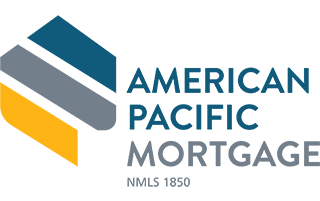What’s the Difference Between an Asset and a Liability?
When it comes to your credit and your potential to borrow money, it is important to have a good understanding of both assets and liabilities. You not only need to know the difference but also need to be able to weigh them out to see your total worth. This is especially important if you are looking to borrow money. For you and the potential lender, the process will begin with understanding where you stand with assets and liabilities. If you do the math before, you will have a better handle on your chances of obtaining a mortgage and save time during the application process.
How Liabilities and Assets Can Impact the Mortgage Approval Process
Generally speaking the mortgage approval process begins with a credit check that is followed by you verifying all your assets and liabilities. Since an asset is something you own of worth, you will start by sharing information to verify these. This comes in the form of pay stubs, banking account statements etc.
Positive Impacts on the Mortgage Approval Process
Your overall worth when it comes to borrowing money is based on your assets and your liabilities combine. So if you have more assets than liabilities your ability to pay your mortgage will look more favorable. Put plainly if you own more than you owe, you will be in good shape for a mortgage or other loan.
Negative Impacts on the Mortgage Approval Process
On the flip side, if you have more liabilities than assets, this will have a negative impact on your credit and your ability to obtain a mortgage. So as you can see, having a good balance of assets and liabilities, and knowing where you stand currently will help you overall as you apply for mortgages.
What is an Asset?
To begin, let’s break down what an asset is. An asset is something you own that has value and would be available to help you meet debts. The second part is critical. You may have a beautiful family heirloom, but if has sentimental value only or you are unwilling to part with it, it’s not an asset. However, owning a car or piece of property outright makes it an asset. This is because you could sell them for cash. There are two types of assets that you can have: non-current assets and current asset.
The Two Categories of Assets
The big difference between a current and non-current asset is the ability of an asset to become cash within a year. This is critical when it comes to borrowing money as it allows the financial institution to determine your ability to pay on a debt both in the short-term and the long-term.
Non-Current Assets and Examples of Non-Current Assets
A non-current asset, also known as a long-term asset, is something that has a longer-term plan for conversion to cash. This would be a car, home or investment property that you own without any loans. Because these types of assets have a longer cycle for selling, you cannot count on them for repayment of debt within a year. It is important to look at your assets critically when you are considering borrowing as it can give you a good idea of your ability not only to pay, but also your credit worthiness.
Current Assets and Examples of Current Assets
A current asset is cash and other assets that you project will be cash within a year. These can include savings and checking accounts, bonds, CDs, stocks, and mutual funds. However, current assets can also include count pending business invoices, inventory, or even prepaid expenses.
What is a Liability?
The opposite of an asset, a liability is anything you are responsible for financially or anything you do not own outright. You can think of loans or debts you need to pay as liabilities. Good examples of a liability is a mortgage on a primary residence or investment property, a car loan, student debt, taxes owed etc. When you begin to think about your own list of liabilities it is helpful to list everything you owe. Then you need to look more closely at when your debts are due.
The Two Categories of Liabilities
Liabilities are also categorized like assets: you can have both current and non-current liabilities. And just like assets, these serve to break your liabilities into those you can pay within a year versus those that are a longer-term payment schedule. Also the types of liabilities for businesses and individuals can differ. Knowing the difference will help you categorize your liabilities and determine your ability to obtain and pay on a new loan including a mortgage.
Non-Current Liabilities and Examples of Non-Current Liabilities
If you have long-term lease obligations, a mortgage or even a car loan, you have non-current liabilities. This is because these types of liabilities are by nature set up for long-term repayment. Here are some examples of non-current liabilities you want to examine: long-term loans like cars payments or mortgages, any deferred compensation or revenues, bonds payable, and deferred income taxes.
Current Liabilities and Examples of Current Liabilities
A current liability is a debt that you expect to pay within a year. Businesses can have current liabilities like the principal portion of notes payable that will become due within one year and accounts payable. Any remaining current liabilities could include payroll taxes payable, income taxes payable, interest payable. As an individual the same applies so if you have loans or debts that you will pay off this year, taxes due or credit card debt, these are considered a current liability.
The Key Differences Between an Asset and a Liability
As we have explored, an asset is something that actually bolsters your ability to pay debts. If you have high-value assets and they are current, this makes your ability to pay a mortgage or a debt more favorable. Most lenders will look at this when deciding how much or if to loan to you; whereas a liability is something that negatively affects your ability to pay. This is because any borrower will look at your current debts and income and determine whether you can take on more. Put simply as asset is something you own, while a liability is something you owe.
Together, assets and liabilities make up your overall financial picture, and will be carefully looked at when you apply for new credit. Lenders will want to have a detailed look at both before entering into any agreement. These are financial institutions willing to lend large sums over 30 years so they will want to know as much about your current financial picture as possible.
Why it’s Important to Know The Difference When Applying for a Mortgage
Applying for a mortgage is a multi-step process that takes an in depth look at your ability to pay. This is why whether you are looking for a commercial loan or an individual mortgage, it is important to know where you stand on assets and liabilities before you begin applying. Banks will look at both assets and liabilities because your ability to pay a new debt is based solely on what you own and how you could pay it back over time.
This is why we recommend taking time to get to know your personal balance sheet. It will definitely be part of the application process along with proof of employment. Knowing where you stand ahead of time will prevent surprises at the bank. As you take stock of your own assets and liabilities, be sure to divide them into current and non-current categories so you can get a clearer picture of your financial health now and down the road. Doing your own inventory may also prompt you to prepare your finances before going to the bank. If nothing else, it will prepare you for the in-depth process of applying for a mortgage.
If you are in the beginning stages of looking for a mortgage, we would love to have the opportunity to work with you. Our skilled team is happy to help you as you work to determine your current assets and liabilities.
The views, articles, postings, and other information listed on this website are personal and do not necessarily represent the opinion or the position of American Pacific Mortgage Corporation or US Lending Company.
* For loan examples and more information visit our disclosure page at https://www.uslendingcompany.com/disclosures/





